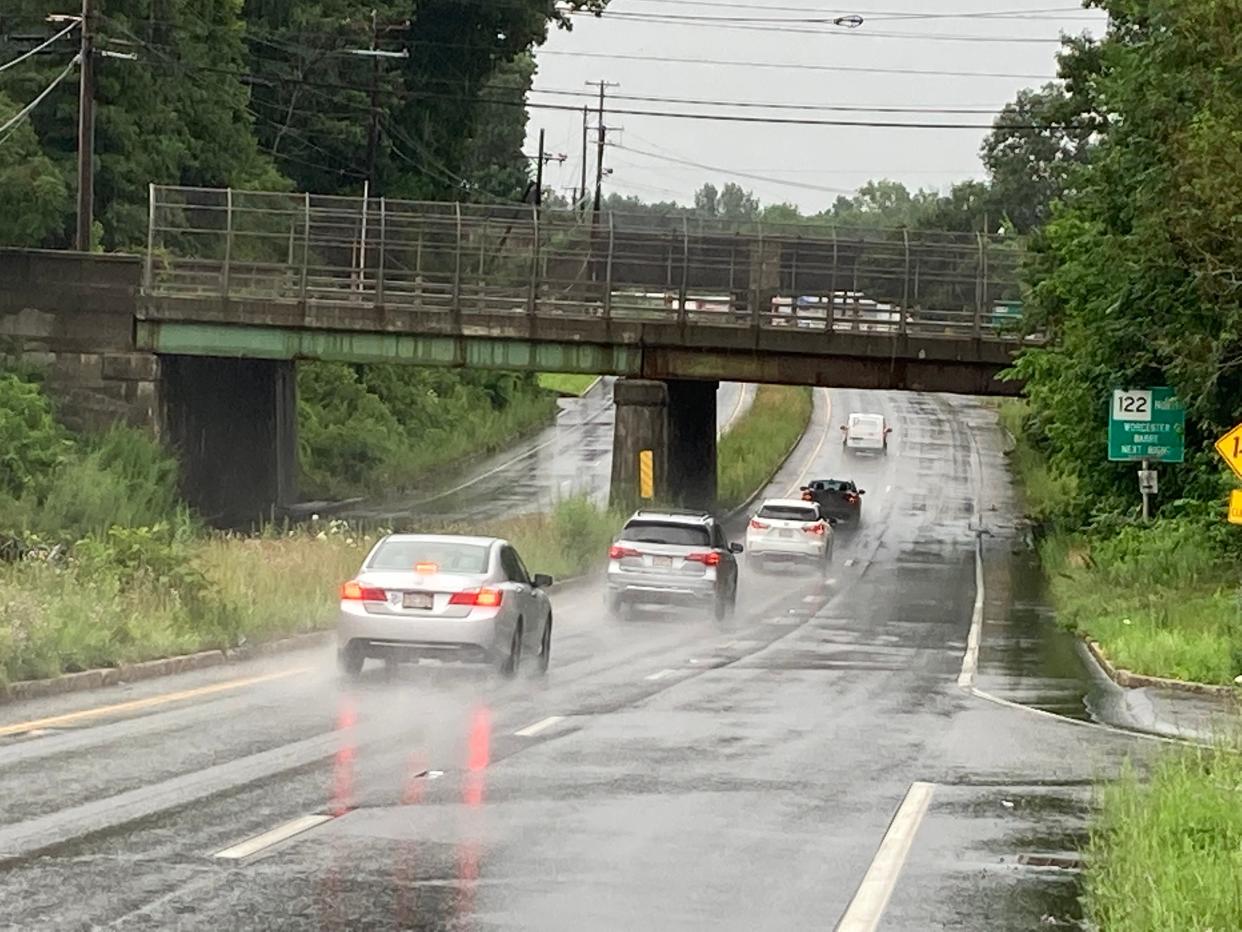$5.5M to fix Worcester Route 20 underpass that constantly floods: Here are the details.

WORCESTER – Death, taxes and flooding of the underpass at the Route 20/Grafton Street interchange. The first two are a given. The last one comes pretty close to a certainty.
Practically every time there is a big storm that dumps a lot of rain in Worcester, we can expect news of cars getting stuck in several inches, sometimes several feet, of water at the underpass. In some cases, emergency crews rush in to save drivers and passengers from potential drowning.
That happened on July 16 when firefighters helped free two cars trapped in deep water. There were no injuries.
"We’ve been aware of flooding there for many years,” said Barry Lorion, who directs the state Department of Transportation's District 3, an area that includes the underpass.
A $5.5M plan to fix the problem
State transportation officials have a plan that Lorion said “should eliminate all flooding.”
The work should start in 2025 at a cost of $5.5 million. An underground pipe that Lorion called a “closed drainage system" will take underpass flood waters and dump them in Flint Pond, located at the southern end of Lake Quinsigamond that borders Worcester and Shrewsbury.
There's already one underground pipe doing this work, so the thinking is a second one will remove the water at a faster pace to end the flooding.
What about environmental protections?
Environmental protections are in the plan to prevent Flint Pond from being polluted, said Lorion. Equipment will capture and environmentally treat any solids in the floodwater at the point where it flows into the pond.
This is standard environmental practice in these kinds of projects, said Lorion, who noted all state and local environmental regulations will be satisfied before construction starts.
Shrewsbury Town Manager Kevin Mizikar said in an email the town had not received any information on the project and had no further comment. A Worcester spokesman said officials were not available for comment.
Besides the additional underground pipe, Lorion said a separate project will redesign the interchange. The design is in the early stage, and any work is five to 10 years away.
Why does the underpass flood?
When water pours into the underpass during heavy downpours, the natural question is, Why does it happen? Ten years ago, it was two or three times yearly, according to a spokesman at the state Department of Transportation. Now, it happens five or six times a year.
Lorion mentioned a 2018 state transportation study, updated this year, that highlighted the explosion of real estate development around the underpass over many decades as one cause of the flooding. Development projects that happened before the advent of stricter environmental regulations were especially problematic, said Lorion, because they resulted in an ample supply of impervious surfaces, like concrete, that allows more water to rush faster to the underpass.
When asked who is ultimately responsible for making sure environmental protections were in place to safeguard against flooding, Lorion said that fell on Worcester because it approved the development projects. A Worcester spokesman said officials were not available for comment.
Lorion noted that the state Department of Transportation does bear the responsibility for making sure drains on the Route 20 corridor are working properly. He also mentioned other reasons for underpass flooding, including the intensity of storms that have become more severe, and the frequency of heavy rains this spring and summer that saturated the ground and left little room for water absorption.
26,000 cars and prevention
Approximately 26,000 cars use the underpass daily, according to state officials, and Lorion said it’s the “worst location” for flooding in District 3.
Given that challenge, maintenance crews routinely inspect the underpass drains and remove any debris, according to Lorion. Beyond that, Lorion said the state has a new preventive system that uses the state Department of Transportation’s weather tracking system. It spots potential problem areas and crews are sent to those locations instead of reacting after the fact.
The plan was in place when the underpass flooded on July 16, and an email from a spokesman at the state Department of Transportation gave the details on how it was carried out:
● Crews inspected the underpass before the storm and were there before heavy rains arrived. Drains were cleared and workers redirected traffic.
● Crews continue to monitor the underpass, and there is increased street sweeping, cleaning and maintenance to keep the drains clear.
Contact Henry Schwan at henry.schwan@telegram.com. Follow him on Twitter: @henrytelegram.
This article originally appeared on Telegram & Gazette: Massachusetts to fix flooding at Route 20 underpass in Worcester

